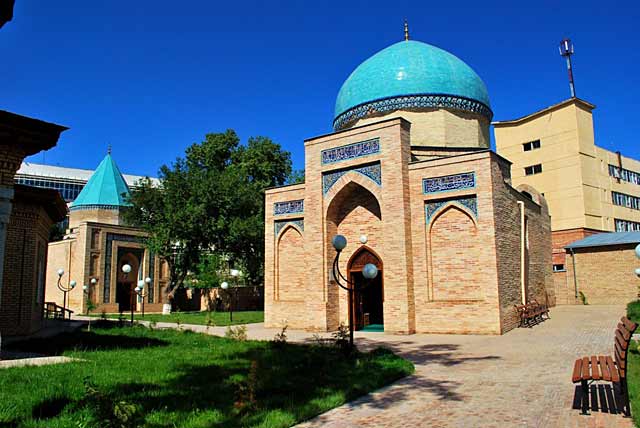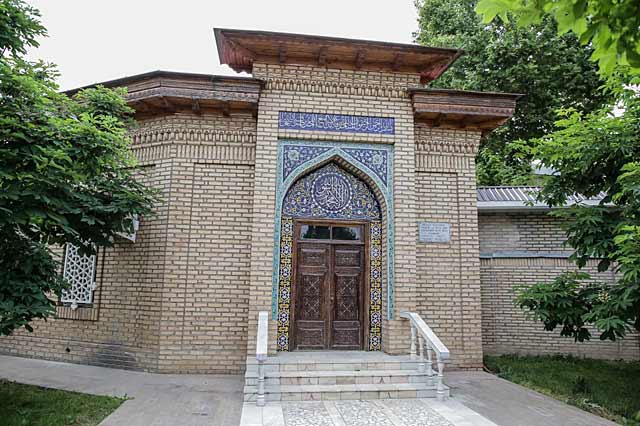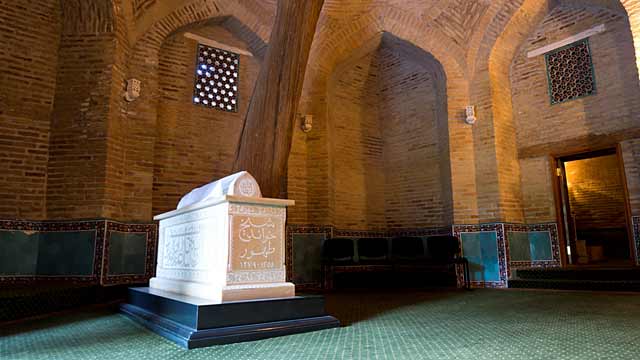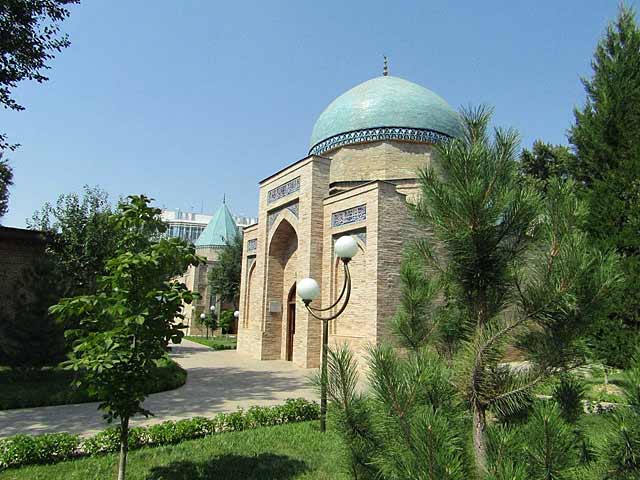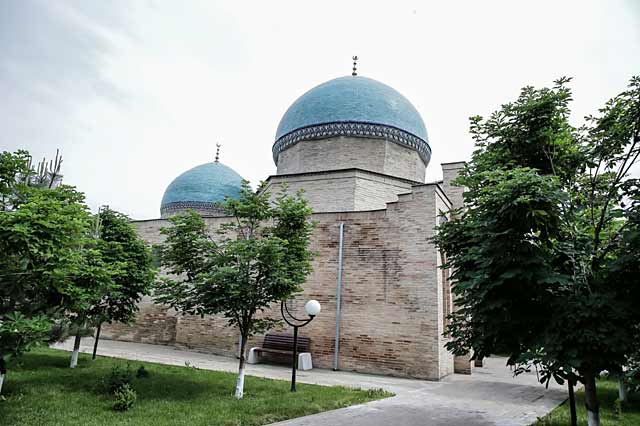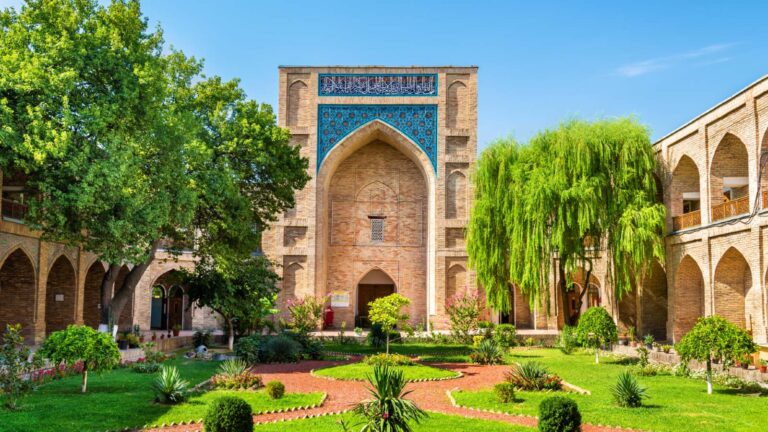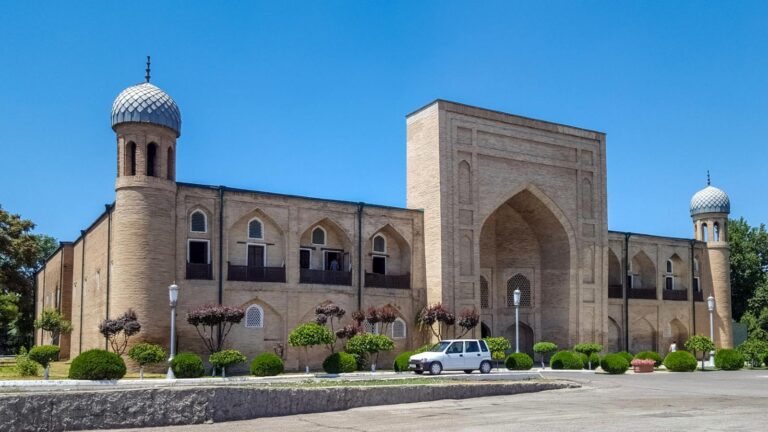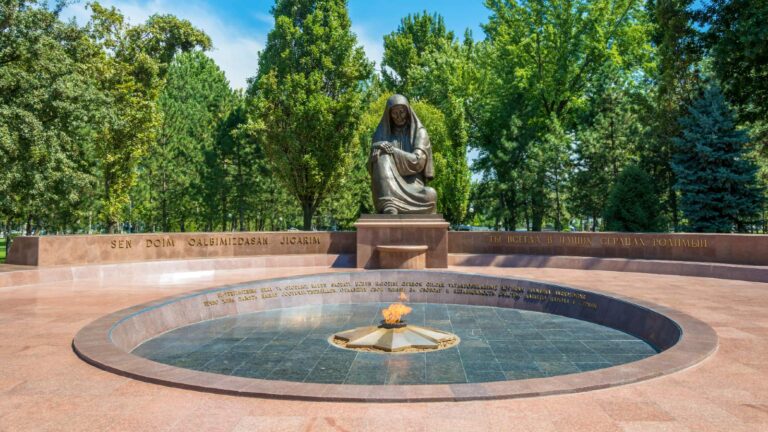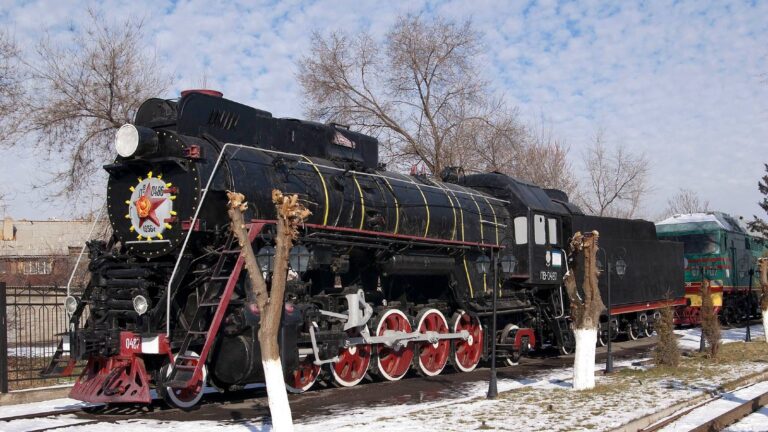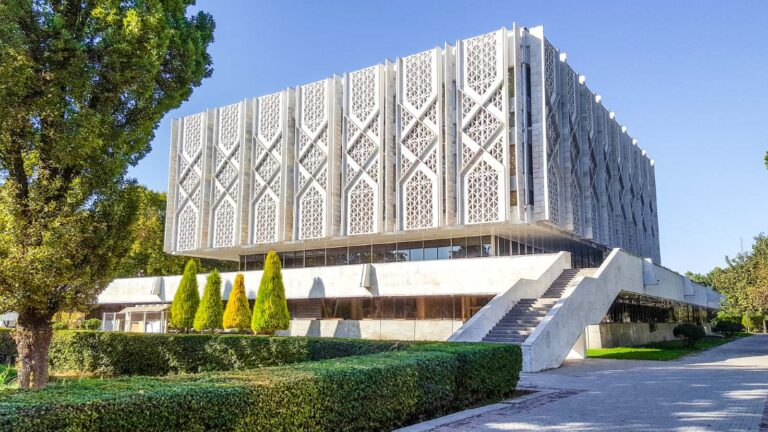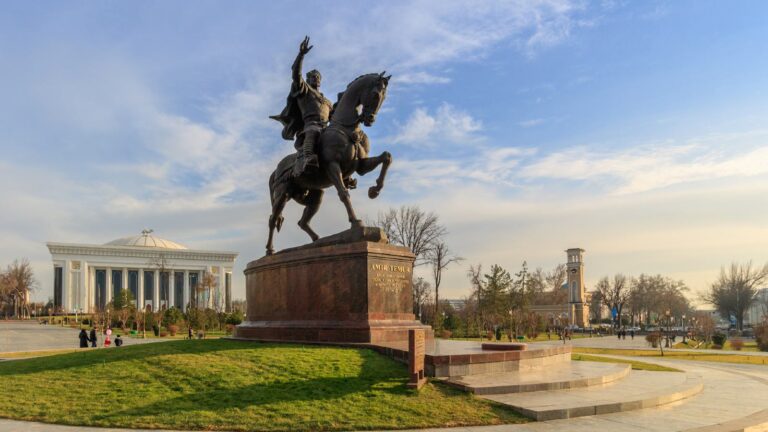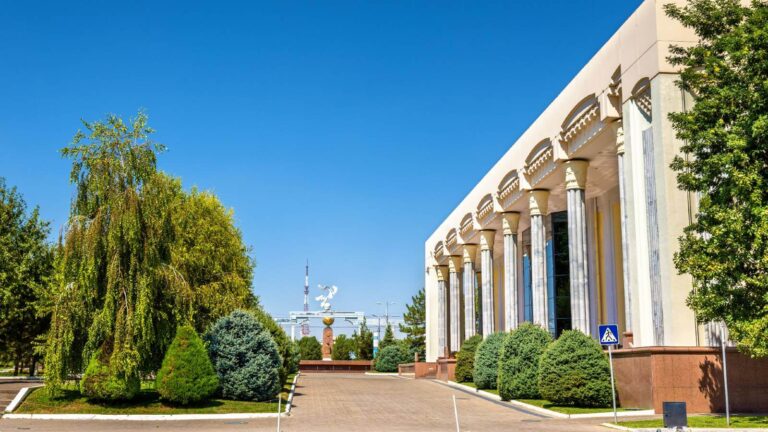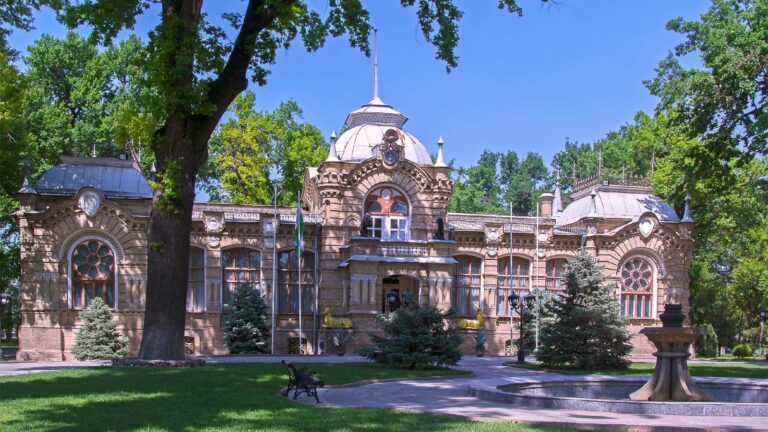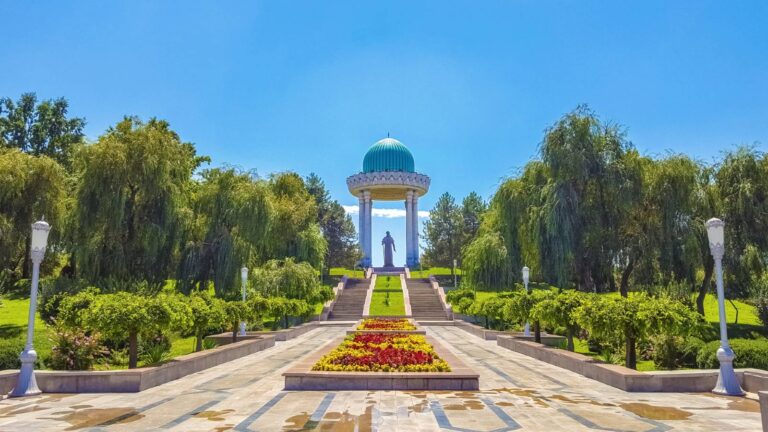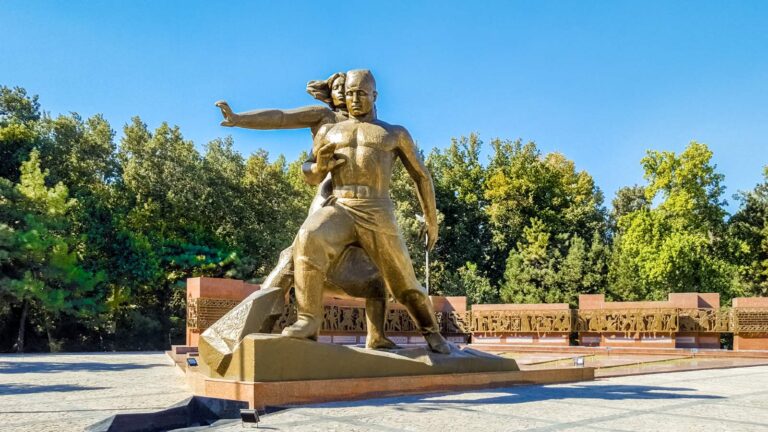Main image: Dmitriy A. Pitirimov, http://www.pagetour.narod.ru, Public domain, via Wikimedia Commons
Getting There
Near the complex there is a public transport stop “Suzuk Ota”, which can be reached by buses No. 17, 190m, and there are also a number of companies in the city (Yandex taxi, my taxi, entrance, intersection, etc.)
What to Expect
It is worth noting that many outstanding Tashkent residents belonged to the Sheikhantaura clan, including the famous preacher of the Timurid era Ubaidulla Khoja Akhror (1404-1490) and the independent ruler of Tashkent in the second half of the 18th century, Yunus-hajj.
Near the Sheikhantaura mausoleum, another mausoleum has survived to this day – the Kaldyrgach-biy cemetery. With the characteristic shape of the pyramidal dome, this architectural monument of the 15th century differs sharply from other buildings of the complex and resembles the cemeteries of the Kazakh steppes.
Indeed, under the arches of this mausoleum lies the ashes of the famous statesman Tole-biy, a Kazakh by birth. Together with the Tashkent residents, Tole-biy managed to expel the Dzhangar-Kalmyk invader from the land of Central Asia. Tole-biy appointed Yunus-khodja, the Sheikhantaur khokim, who after his death became the independent ruler of the Tashkent state, as his confidant in Tashkent.
Today Tashkent Sheikhantaur continues to retain the importance of an outstanding architectural and pilgrimage monument.
History
Sheikhantaur was born at the end of the 13th century in the Khodja family in the mountain village of Bogustan – now the waves of the Charvak reservoir are splashing there. His father, Sheikh Omar, was a descendant of the second righteous caliph, Omar. The people believed that Sheikh Omar knew how to work miracles and command the elements. The highest grace seemed to have passed from him and to his son. Young Sheikhantaur learned Sufi truths.
According to biographers, the Tashkent Sufi was particularly struck then by the truth: “High spiritual qualities and knowledge in the sciences are directly proportional to the patience and meekness of a sage in relation to the rudeness of the ignorant.” The Sheikh lived and preached in Tashkent and died between 1355 and 1360.
According to legend, the mausoleum over his grave was built on the initiative of Amir Timur himself. This is a two-chambered structure under two domes of different heights. The building acquired its present appearance after numerous restorations and alterations at the beginning of the 19th century.
There are three grave-stones inside, one under a large dome and two under a small one. In the mausoleum, the only one of forty-eight sauras, “Saur Iskander”, planted by Alexander the Great, has survived. The petrified coniferous tree is located inside the mausoleum next to the majestic grave-stones of the Sheikh.
Facilities Available
Many grocery stores, Restaurants such as Velvet, Bon, Iqboloxon, Banks like InfinBank, Qishloq Qurilish Bank are located nearby this ensemble.

